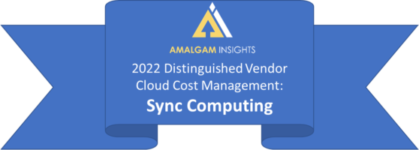Organizations sometimes describe the job of cloud cost management as a “FinOps” role (an abbreviation of “Financial Operations” or “Financial Cloud Operations”) or as a Cloud Economics position. Amalgam Insights finds that there is confusion about these terms. Here’s why.
The common-sense definition of Financial Operations belongs to the Finance team responsible for financial close, budgeting, planning, treasury, tax, and accounting. Meanwhile, the concept of “economics” typically applies to the ecosystem of the production and consumption of value. In many cases, that goes beyond the scope of a standard “cloud economics” role, which focuses on cloud optimization and cost management.
However, in practice, these terms of FinOps and Cloud Economics are often used interchangeably to refer to managing costs, as well as inventory and governance. This is misleading on a variety of levels. The appropriation of “FinOps” to be cloud-specific is confusing enough, especially since a separate “FinOps” is starting to emerge for financial applications used to assist with planning, budgeting, close, consolidation, treasury management, and other financial tasks requiring some strategy, workflow, or collaboration to complete. The Cloud Economics term is a challenge for a different reason: it is an inaccurate term as economics should refer to the financial and business value associated with cloud deployments, including sales bookings and support costs at the microeconomic level and the environmental impact and ecosystem costs at the macroeconomic level. Economics, finance, and accounting are three separate concepts that the IT department needs to understand.
Amalgam Insights acknowledges that this is a common occurrence and hopes this note provides clarity for the reader who may find herself already acting as a “cloud economist” or “FinOps practitioner” based on activity around managing cloud costs while perhaps not being familiar with this terminology. The biggest concern Amalgam Insights has with these inaccurate terms is that the use of these terms may lead to the trivialization of these roles as FinOps or cloud economists are typecast as “cost analysts” rather than personnel who understand the business repercussions of cloud on the business as a whole. Cost analysts are a cost center while business analysts who understand revenue root causes are often a profit center.
In this light, what can FinOps and cloud economics personnel do to avoid being pigeonholed? Here’s Amalgam Insights’ advice.
1) Talk to the finance team in charge of organizing and managing IT costs. Somebody at the finance team has to either articulate the value of IT or rolls IT up into general and administrative costs or cost of goods sold. Understand how IT is categorized in your organization, as cloud may be miscategorized.
2) Understand the full lifecycle of cloud costs. This includes vendor sourcing, contract negotiations, optimization, service rationalization, and the security and governance concerns associated with technology vendor selection. Do not be stuck within one small section of Technology Lifecycle Management within a complex spend category such as cloud unless you are seeking to be commoditized over the next few years.

Finally, understand the economics associated with cloud. ESG (Environmental, Social, and Governance) is an increasingly important and strategic topic for businesses seeking to improve branding and reduce their risk to any operations that may lead to future concerns. If you want to be associated with economics, understand not just the services and technologies supported but their impacts on the environment and to the service provider. This allows you to be a resource not just for IT, but also for the CFO, Chief Strategy Officer, Chief Procurement Officer, and other strategic vendors.


